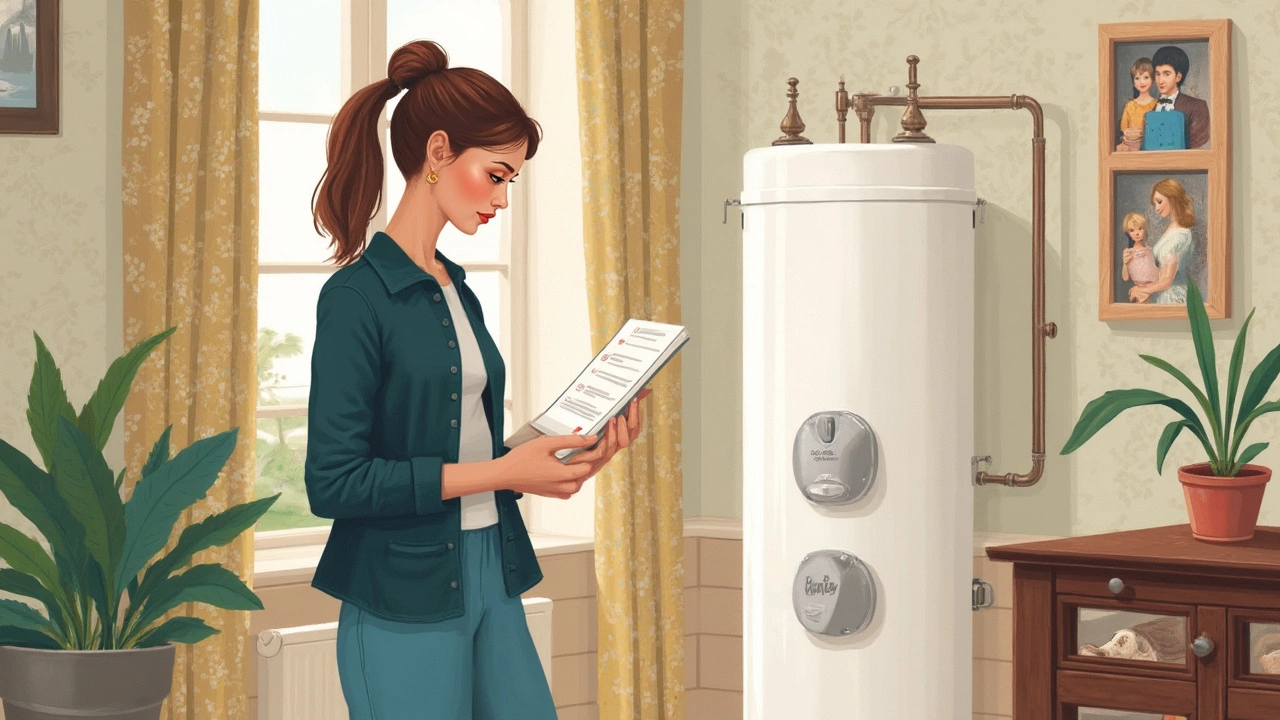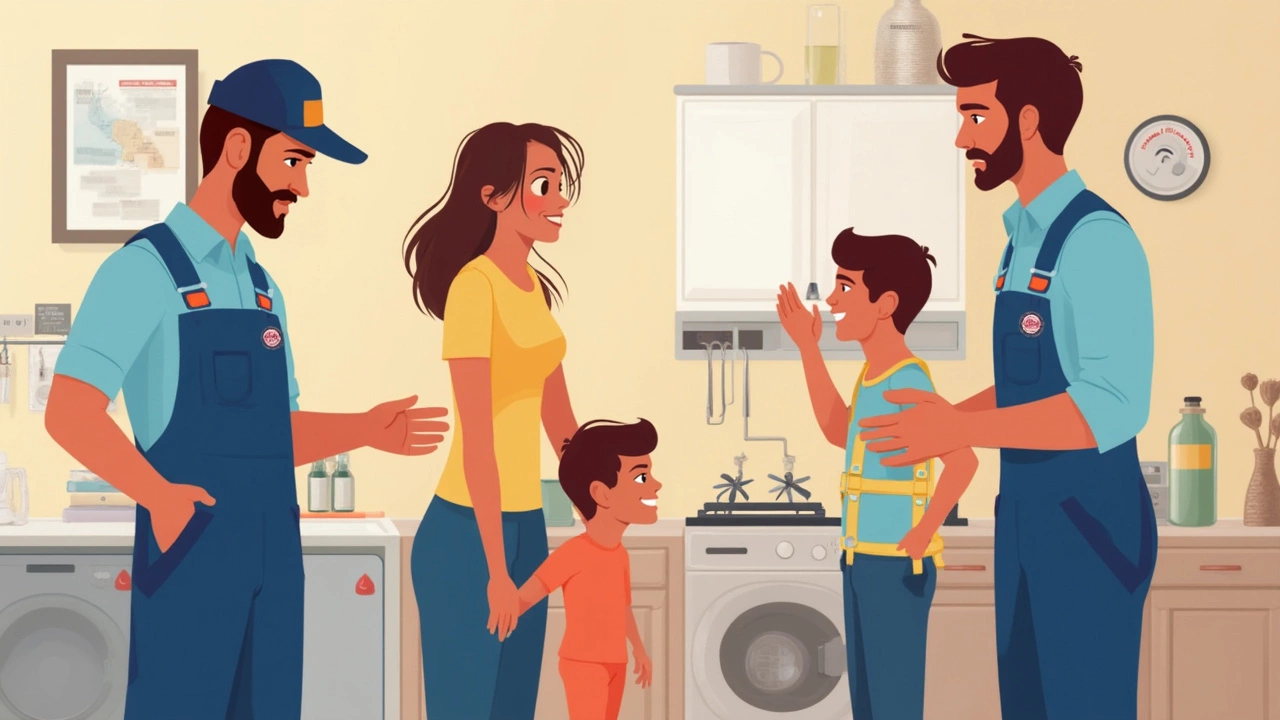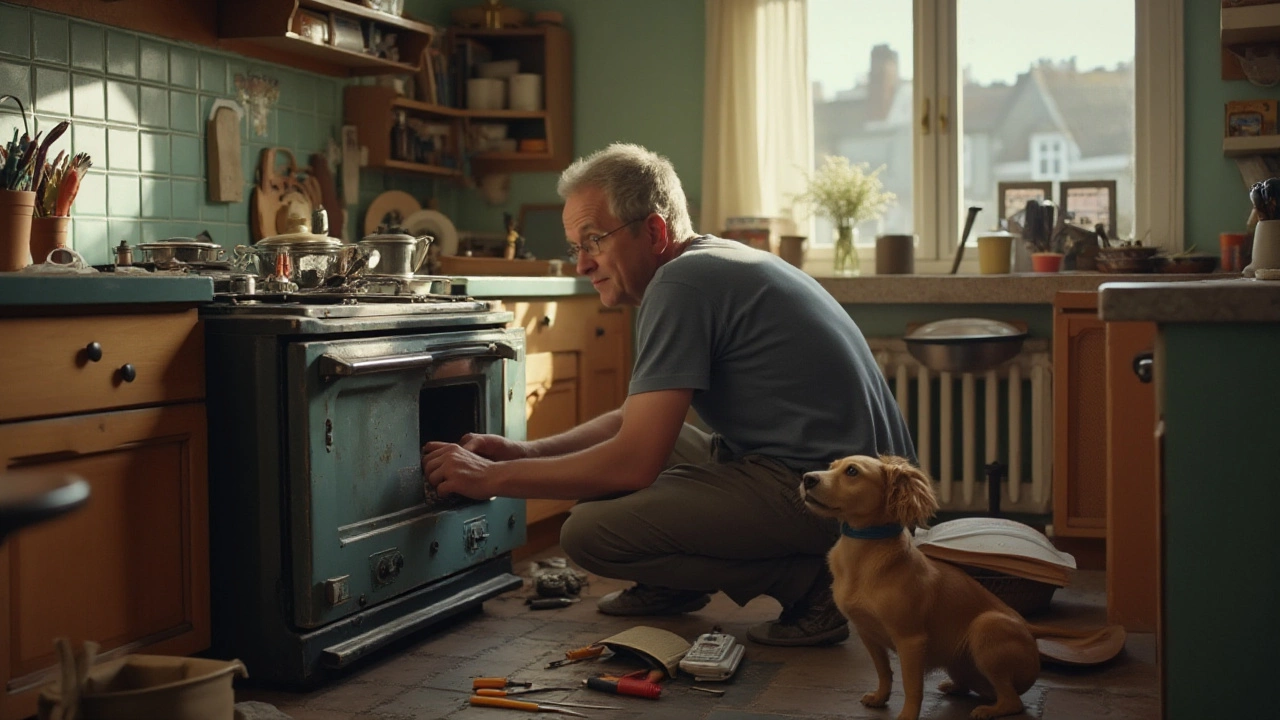
- 25 May 2025
- Gideon Thornton
- 0
Your gas stove, heater, and dryer all suddenly stopped working? Don’t assume the worst, but don’t ignore it either—this can be serious or just something silly. Before you reach for the phone, check the basics: Is the appliance plugged in (yep, some gas appliances have electric parts)? Has someone knocked a switch or unplugged something by accident? For stoves and ovens, make sure all knobs are properly set to the right position—sometimes a knob that's just a millimeter off will keep everything off.
If a few appliances quit at the same time, it's probably not just one of them acting up. It could be a bigger issue, like your home’s gas supply taking a break. Start with your utility company. It’s worth checking if there’s a reported gas outage in your area—head to their website or give them a call. Gas meters have their own safety features that can trip if they sense a problem, especially after a storm, earthquake, or even a strong bump. If your home recently lost power, some gas meters need to be manually reset too.
- Don’t Panic: Check the Simple Stuff
- Gas Supply: Is It Even Reaching Your Home?
- Hidden Safety Switches and Valves
- Troubleshooting Specific Appliances
- When to Get Professional Help
Don’t Panic: Check the Simple Stuff
Before you start stressing about big repair bills, let’s cover the basics. You’d be surprised how often gas appliances stop working because of something really minor. Most people call for help only to find out it was a flipped switch, a tripped breaker, or something just as simple. So, what should you check?
- Gas appliance repair tip #1: Double-check if your appliance is plugged in. Nearly all modern gas appliances—stoves, ovens, water heaters—use electricity for igniters, displays, or fans. If the outlet’s dead or the plug’s loose, nothing’s going to work.
- Is the circuit breaker tripped? Head to your electrical panel and scan for any breakers in the ‘off’ position. A tripped breaker knocks out power and keeps things dead quiet.
- Look at the gas control knobs. Sometimes, a knob that’s not fully turned to “on” can keep an appliance from lighting. This happens a lot with stoves and ovens when someone’s in a rush.
- Smell gas? Stop right here and air out the place immediately. Even a tiny whiff means you should skip the DIY and call your gas company or the fire department—it’s not worth the risk.
- Check for error codes on digital displays. A lot of newer appliances have screens that show problems, like “no gas” or “igniter fault.” Jot down any codes you see for later.
Need some numbers? Here’s a quick look at how common some easy-to-fix issues are:
| Simple Fix | % of Service Calls |
|---|---|
| Unplugged appliance | 12% |
| Tripped breaker | 16% |
| Gas knob not fully on | 7% |
So, sometimes it really is just that simple. A couple of minutes spent on these checks could save you the headache (and cash) of calling a tech for something you could have done yourself. If your appliance still won’t turn on after these steps, it’s time to dig a little deeper.
Gas Supply: Is It Even Reaching Your Home?
If every one of your gas appliances is out, the most common culprit is the gas supply itself. Sometimes the problem's right outside your front door, not inside. Utility companies do regular maintenance and upgrades, and sometimes that means cutting off gas to whole neighborhoods. Check for notifications—some companies post updates online or send text alerts about outages.
Before you call anyone, take a look at your gas meter. Most homes in the US have one outside, usually near the street or side of the house. The meter should have numbers spinning or a digital display counting up. If it's totally blank or the dials aren’t moving while something should be running, that’s a red flag.
- Check if your neighbors are having the same problem. If all the houses on your block have cold showers and no stove flames, odds are it’s a big area issue.
- Some meters have a red or yellow warning sticker or light. If you spot one, that usually means the safety cutoff tripped—sometimes from a small earthquake, or just a hard shake. Don’t try to reset this yourself—call your gas provider right away.
- If you recently paid your bill late, service might’ve been cut. Sounds awkward, but it happens more often than you'd think.
For homes with propane tanks, make sure the tank isn’t empty. A gas gauge on the top should show how full it is. If it’s under 10%, it’s time for a refill—most gas burners won’t work at low pressure.
Here’s a quick look at common gas supply issues and how often they’re the culprit:
| Issue | Percent of Service Calls |
|---|---|
| Utility Company Outage | 21% |
| Shutoff Valve Accidentally Closed | 17% |
| Empty Propane Tank | 12% |
| Billing/payment Problems | 8% |
| Meter Safety Lockout | 6% |
If you rule out an outage or empty tank, double check every shutoff valve you can find. Follow the gas line from the meter into your house—it should have a big valve handle. The handle should be parallel (in line) with the pipe for open. Anything else, and you might’ve found the culprit. Give it a turn, but don’t force it if it’s stuck.
Not all gas issues are do-it-yourself. For anything you’re unsure about, especially leaks or warning lights, leave it to the pros. The most important thing is safety, and handling gas appliance repair without training is risky. If in doubt, air out your home and call your provider or a licensed technician.

Hidden Safety Switches and Valves
It’s wild how many people run around in circles before spotting a flipped safety switch or a closed gas valve. Most gas appliances have safety features that cut off the supply if they sense anything wrong—or if someone accidentally bumps something during cleaning or moving furniture.
Let’s break down the key spots: Most homes have a main gas shut-off valve, likely outside near the meter. If it’s turned so it’s crosswise to the pipe, gas flow’s off. You can check for this easily. Some newer homes also have automatic excess flow valves: when these detect sudden changes in gas flow—like a damaged pipe or aggressive shut-off—they clamp down, stopping the gas. Sometimes, this needs a reset by a professional.
Inside, each appliance usually comes with its own shut-off lever or valve. For ovens or cooktops, look for a valve behind or underneath. Water heaters and furnaces have shut-offs too, usually right in the supply line about a foot or two from the appliance. Sometimes they’re tucked behind panels or boxes. If you’ve had recent work done, someone might have left something switched off by mistake.
- Check under or behind your appliance for a local shut-off valve (it should be parallel to the pipe for “on”)
- Verify that no child safety switches or appliance lockouts are engaged — these are common on modern stoves
- Don’t forget about older homes: you might find long-forgotten shut-off valves in crawl spaces or basements
About 60% of service calls for gas appliance repair end up being something as basic as a closed valve—so this one’s worth checking.
| Gas Appliance | Common Valve Location | Reset/Safety Switch? |
|---|---|---|
| Stove/Oven | Behind, under cooktop, or inside base cabinet | Yes (child safety locks, reset buttons on some models) |
| Water Heater | On supply pipe within 2 ft | Yes (thermocouple safety, electronic lockouts) |
| Furnace | On incoming line, sometimes with a shutoff panel | Yes (flame safety switch, limit switch) |
| Dryer | Behind appliance, near the wall connection | No |
Remember: Never force a valve or poke random buttons inside the appliance if you’re not sure what they do. If a switch or valve doesn’t move easily, or if you smell gas while checking, stop and call a pro.
Troubleshooting Specific Appliances
Every gas appliance repair job has its own quirks, so it helps to know a bit about what can go wrong with each one. If your oven, water heater, or furnace is cold and lifeless, there are a few tried-and-true checks you can do without grabbing special tools.
- Stove or Range: If burners won’t light, make sure the igniter clicks. No click? Try plugging into a different outlet. If you hear clicking but don't see a spark or flame, dirt or grease is probably blocking the igniter or burner holes. A good, careful cleaning can solve it. Smelling gas? Stop. Don’t keep trying—call for help and step outside.
- Gas Oven: Ovens have a safety shutoff—if it senses anything off, it won’t open the gas valve. Older ovens use a pilot light; make sure it’s on. For modern ones, listen for a faint hiss when turning it on. No noise? The igniter could be shot.
- Water Heater: If there’s no hot water, check if the pilot light is burning. For newer models, there’s often an LED status light—peek through the little viewing window. No light? The thermocouple or igniter might be faulty. Resetting your water heater (usually a red button) can sometimes jog it back to life.
- Furnace: Look for error codes—some units flash a code behind a small glass window. Check the thermostat first, though. If that’s on and working, and the furnace still won’t start, the flame sensor or pressure switch could be to blame.
- Gas Dryer: Is it tumbling but not heating? That usually means gas isn’t igniting. Lint buildup in the vent or around the burner assembly can trigger safety shutoffs. Clean out the lint trap and try again. Still nothing? The igniter or thermal fuse might be done.
Sometimes it’s the little things, sometimes it’s a safety part doing its job. Consider what the folks at the Gas Appliance Manufacturers Association say:
“If you’ve walked through the most common checks and the appliance still won’t run, don’t try to take it apart yourself—most repairs beyond this point can risk a gas leak or void your warranty.”
Here’s a quick look at how often certain problems come up based on a report from HomeServe USA:
| Appliance | Most Common Problem | % of Service Calls |
|---|---|---|
| Stove/Oven | Igniter failure | 38% |
| Water Heater | Pilot/igniter issue | 41% |
| Furnace | Flame sensor fault | 29% |
| Dryer | Thermal fuse blown | 35% |
If your quick fixes don’t solve it, jot down any weird sounds, blinking lights, or error codes. The more info you can share, the easier it’ll be for the repair tech to nail down the problem fast.

When to Get Professional Help
If you’ve tried the quick checks and your gas appliances still refuse to work, this is where things get real. There’s a big difference between relighting a pilot light and dealing with a leak or busted valve. Messing with gas lines isn’t like tightening a screw on your junk drawer—one wrong move and you could put your home (and yourself) at real risk.
You should call a pro fast if you:
- Smell rotten eggs or sulfur—classic sign of a gas leak.
- Hear hissing from pipes, meters, or appliances (another warning for leaks).
- See visible damage to gas lines, valves, or connectors.
- Notice none of your gas appliances work and the meter shows zero gas flow, but your bill is up to date.
- Try relighting a pilot and it won’t stay lit.
Some states require licensed technicians for gas appliance repair by law, because there are real dangers: explosions, carbon monoxide, and fire hazards. According to the U.S. Fire Administration, over 1,500 residential fires each year are started by faulty gas appliances. Don’t be a statistic—if you aren’t 100% sure, back away and call your local gas company or a certified repair tech.
| Red Flag | What to Do |
|---|---|
| Gas smell or hissing | Leave the area, call emergency services and your gas provider |
| Visible line or valve damage | Don’t touch anything, call a pro |
| No gas flow at the meter | Check for regional outage, then call your provider |
| Pilot light issues | Try resetting once, then leave it to a technician |
Don’t let YouTube DIY confidence get the best of you here. When gas is involved, bringing in a professional isn’t just smart—it’s a must for safety.


